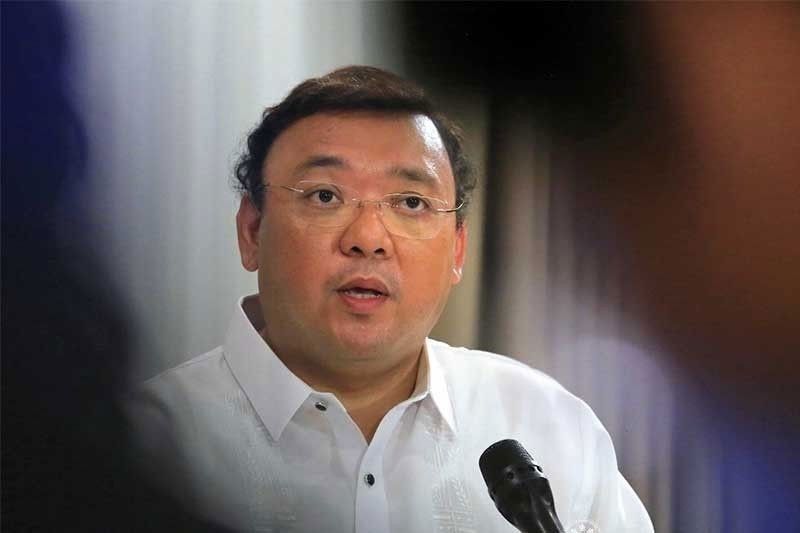Some LGUs want stricter quarantine

MANILA, Philippines — Several provinces want to be placed under stricter quarantine or remain under one as the government reviews its progress in the fight against the coronavirus disease 2019 (COVID-19) pandemic.
After staying for two weeks in Davao City, President Duterte is back in Manila to meet with the government’s pandemic task force and to announce his decision on the quarantine measures in Metro Manila and other areas.
The President’s meeting with the Inter-Agency Task Force (IATF) for the Management of Emerging Infectious Diseases yesterday was expected to tackle the quarantine scenarios in various parts of the country, including the appeal of some local governments to change their classifications.
Nearly 20 local governments have asked the task force to reconsider their groupings.
Presidential spokesman Harry Roque said some areas were seeking to impose stricter quarantine measures. They were Quezon province, which wanted to be placed under general community quarantine (GCQ) from modified general community quarantine (MGCQ) and Cebu City, which sought an upgrade to modified enhanced community quarantine (MECQ) from GCQ.
He said the Caraga region, Abra, Apayao and Lanao del Sur – areas that have shifted to the most lenient MGCQ – also wanted to be under GCQ.
Dagupan City, Batanes, Davao de Oro, Davao del Norte, Davao Oriental, Davao Occidental and Davao del Sur, meanwhile, appealed for “de-escalation” of quarantine restrictions. Meanwhile, Pangasinan, Angeles City, Nueva Ecija, Zambales, Pampanga, Cavite and Cebu province have urged the IATF to reclassify them from GCQ to MGCQ.
“These are the areas that appealed their classification and I do not know the decision yet because the IATF members are still discussing them,” Roque said.
Roque said local governments were informed about the IATF’s recommendation on quarantine classifications last Wednesday to give local governments time to make an appeal.
He said it was premature to react to warnings of University of the Philippines experts that the number of coronavirus cases may increase to 40,000 by the end of June if restrictions are eased prematurely.
“That assumes that we will have a relaxation. We have not made a decision,” he added.
Roque said the President would take into account the need to contain the virus as well as reopen the economy when he decides on the classifications.
“It was a reasoned gamble. The right to life prevails. We need to take care of the health of everyone but there is also the right to livelihood so we had to reopen the economy and that’s what we did under GCQ,” he added
Health Undersecretary Rosario Vergeire said the case doubling time and critical care utilization rate would be the basis for determining the quarantine restrictions to be imposed in an area. She said the case doubling time in Metro Manila has slowed and the critical care utilization rate is about 35 percent, which means that the country still has available intensive care unit beds and mechanical ventilators.
Last Friday, Interior Secretary Eduardo Año said Metro Manila was likely to remain under GCQ as authorities continued to report fresh coronavirus cases.
Aside from Metro Manila, areas that have been downgraded to GCQ are Central Luzon, Calabarzon, and Central Visayas regions, the cities of Baguio, Iloilo, Zamboanga and Davao, and the provinces of Pangasinan and Albay. Other parts of the country are now under MGCQ but local governments have been given the authority to implement lockdowns in areas with confirmed coronavirus cases.
DOT guidelines
The Department of Tourism (DOT) has released interim guidelines for tourism enterprises applying for accreditation.
Under the guidelines, a tourism enterprise may receive three types of certification – one each for accreditation, provisional accreditation, and basic registration.
A certificate of accreditation is for compliance with Minimum Public Health Standards, as well as with basic and minimum standards for the operation of tourism facilities and services; and for undergoing Physical Inspection of premises.
“The Certificate of Accreditation shall be valid for two years and shall be renewable thereafter unless sooner revoked for cause,” the DOT said.
A certificate of provisional accreditation is for compliance with the same requirements but involving only virtual inspection of premises. Such certificate is valid for one year and shall be renewable thereafter unless sooner revoked for cause.
“As part of the accreditation process and to ensure that it complies with Minimum Public Health Standards, the applicant shall allow the physical inspection of its premises,” the DOT said.
“If physical inspection is impracticable, Virtual Inspection of premises shall be conducted, in which case, the Accommodation Establishment shall be issued a Provisional Accreditation,” the guidelines read.
A certificate of registration shall be issued to a tourism enterprise found compliant with only the basic requirements for the operation of tourism facilities and services. It is valid only for one year unless sooner revoked for cause.
Documentary requirements for new applicants include an accomplished application form, self-assessment form, valid mayor’s permit or business permit and sworn statement of undertaking.
The documentary requirements for renewal applications are the same except for the accomplished self-assessment form.
Moreover, tour and travel agencies applying for DOT Accreditation, whether new or renewal, and whose operations shall be under a Work-From-Home arrangement for employees, need to submit the same requirements plus a declaration of work-from-home operation; a Barangay Certificate of Residency stating that the applicant has been a resident of the barangay for at least one year; and a copy of the Contract of Lease, if the place declared as residence is leased and not owned.
The guidelines stressed that accreditation fees, whether for new application or renewal, shall be waived until further notice.
The DOT said earlier that accommodation establishments that seek to operate in areas under MGCQ would be required to secure a certificate of authority to operate from the DOT.
In line with this, the guidelines said that an accommodation establishment granted a Certificate of Provisional Accreditation shall automatically be granted a Provisional Certificate of Authority to Operate.
The DOT announced earlier that accommodation establishments would be allowed to resume normal operations in areas under MGCQ, but at only 50 percent operational capacity.
Tourism Congress of the Philippines (TCP) president Jose Clemente III has expressed optimism on the continuing commitment of accommodation establishments to support a safe tourist experience and ensure healthy travel.
He added that the partnership between DOT and private sector stakeholders is key to paving a steady, safe and productive restart of tourism across the country. Catherine Talavera
- Latest
- Trending


























